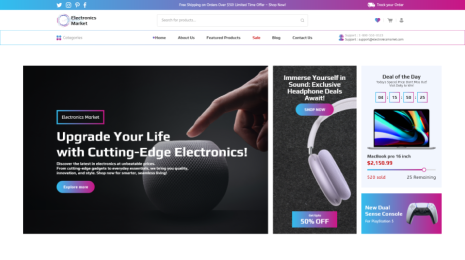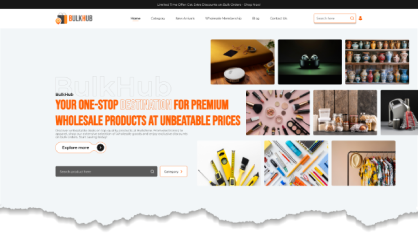Facebook Pixel is a powerful tool that can help you track the performance of your Facebook ads and optimize them for better results. It is also a crucial component for retargeting and tracking conversions. If you're a WordPress user, you might be wondering how to add the Facebook Pixel code to your website.
In this compressive article, we'll guiding you through the step-by-step process, showing you how to easily add Facebook Pixel to WordPress website. Whether you're a seasoned pro or a newbie, this guide will help you get up and running with Facebook Pixel in no time.
What is Facebook Pixel?
Facebook Pixel, powered by Facebook, is a tool that helps you know about users and their interactions on your site. The data collected can be in the form of forms, events, page views, and submissions, which are ultimately called conversions. These actions are tracked and reported, letting you measure better insights from the Facebook ads.
Facebook Pixel recently changed its name to meta pixel is a piece of code, placing it on your website lets you track, measure visitors behavior and conversion data of your Facebook ads. It is used for tracking and optimizing the effectiveness of Facebook advertising campaigns by fetching ads visitors’ data.
The pixel can be used to track events such as add to cart, initiate checkout, and complete purchase, which can help businesses understand how their Facebook ads are impacting their overall sales.
Additionally, the pixel can be used to retarget website visitors, show personalized ads to specific audiences, and optimize ad delivery for the best results.
We've compiled a collection of Facebook tips and tutorials for WordPress users. Discover practical advice on everything from setting up the Facebook Pixel to optimizing your website for voice search. Whether you're a beginner or an experienced WordPress user, you'll find valuable insights to enhance your Facebook marketing strategy.
Why Is Facebook Pixel Important?
Add Facebook Pixel to WordPress website to track conversions and consolidate stats of your Facebook Ads. Other several importance of installing pixel code in your WordPress website includes:
- Better Targeting: The Facebook pixel for WordPress allows you to capture and analyze data on users’ engagement activities on your website, which can be efficiently used to create more effective ad campaigns.
- Retargeting: Pixel enables you to retarget already visited users with more effective tactics to drive more sales and conversions.
- Custom Audience Creation: Pixel code allows you to custom audiences for specific and customized ads.
- Conversion Tracking: Pixel code allows you to track your conversion data to know your effective ads from the set of ads.
- Ads Optimization: It also enables analyze the data and optimize your ads for better performance, and make your campaign cost effective.
- Dynamic Product Ads: The Facebook pixel allows you to reach out to potential buyers those who have clicked your ads but did not complete the purchase.
How to Add Facebook Pixel to WordPress?
Here is the ultimate guide to setting up Facebook Pixel in WordPress. The first step is where you need to get the Facebook Pixel ID from the Facebook Ads Manager dashboard. For this, you need to follow a stack of steps to set up Facebook Pixel better.
Creating a Meta/ Facebook Pixel Account
- Firstly, log in to your Facebook account and reach the Events Manager from the main menu.
- Under the Events Manager tab, tap the Connect Data Sources tab.

- On the next page, among several data source options, you need to tap “Web” and then hit the Connect button.
- On the next page, you will be asked to give a name to the Pixel and tap the Create Pixel button.
- You need to enter your website’s URL then and tap the Check button.
- On the next page, you need to tap the Meta Pixel only and hit the Next button.
- At the end, tap the Install Code Manually.

You have the Facebook Pixel ID with you, which will help you to implement the integration well. There are two useful methods through which you can add Facebook Pixel to WordPress: using a plugin and adding code snippets.
Method 1: Using a Plugin
There are multiple plugins to ease your process of adding the Facebook Pixel to WordPress. But here we are using the “PixelYourSite” plugin, or it can be said as the Insert Headers and Footers plugin. So, let’s find out how to setup:
- Firstly, you need to install and activate the plugin on your site. For this, reach the WordPress dashboard, tap the Plugins tab, and then the Add New option.
- From the entire plugin book, you need to search for the Pixelyoursite plugin. Once found, hit the Install and Activate button.
- After the activation, it will appear in the dashboard area. You need to reach the plugin under the dashboard and tap the Click for Settings button.
- Here, you need to enter the Pixel ID under the Meta Pixel ID Field.
- Then simply scroll down to the bottom and save the settings.
We've listed some of the best woocommerce facebook plugins in our previous blog. Do check them out.
Method 2: Adding Manually
This is the second method to add Facebook Pixel to WordPress by adding the code snippet manually. The method is preferred when you don’t wish to use the plugin. So, let’s head for it:
- Reach out to the WordPress editor under the Appearance section of the dashboard area.
- Here, you need to find the header.php file.
- After this, simply paste the Facebook Pixel code snippet above the <head> tag you got from Facebook’s dashboard.
- And it's done, but you need to wait for at least 20 minutes until the status gets updated on the Facebook dashboard. Also, make sure your website enables user privacy and complies with data protection regulations when using tracking technology.

Verify the Installation
This step comes after you have set up the Facebook pixel for WordPress, as it seems a crucial step to verify the installation. Let’s find it out:
- You need to install a Chrome extension called Facebook Pixel Helper, which is the tool to validate your Pixel installation.
- Once you have installed the extension, you need to head back to the area where you added the Facebook Pixel.
- Here, you need to tap on the Pixel Helper icon on the Chrome toolbar that shows the pixel is active on your site.
- After this, you need to encounter the errors and make sure the pixel is receiving data properly.
Configure Facebook Pixel Settings
After you add Facebook Pixel to WordPress, you need to configure the Facebook Pixel Settings once you are done with installing and verifying it for your WordPress site. For this, you need to reach the Events Manager tab on the Facebook Ads dashboard to manage the pixel settings.
Here are some of the features you need to configure the Facebook Pixel settings:
1. Locate your Pixel ID
You can find your pixel ID under the Events Manager tab where you need to choose your pixel ID as this is the only identifier of your pixel so you must keep it understandable and handy.
2. Setup Conversions API
This is the feature that works along with the Pixel to send events directly from the server. However, this comes under the optional step but helps in getting accurate data tracking in terms of the Woocommerce site.
3. Enable automatic advanced matching.
This feature helps match the pixel’s ability to match the conversion events with the Facebook users. And this is done when users put their additional details, like email, while visiting Facebook.
4. Configure Events
This feature tells you to determine which actions you wish to track. It can be form submissions or product purchases. These are the actions to tailor Facebook ads for enhanced conversions.
5. Parameter Tuning
You can customize the data sent with events with the addition of parameters. This feature helps in specifying the details, like product IDs or categories in Woocommerce.
This is how the Facebook pixel for WordPress integration proves the same even when you use plugins or code snippets.
Facebook Pixel and E-commerce Integration
You know how beneficial it is to add Facebook Pixel to WordPress site to track the users’. Here’s how you can easily do this:
You have your Pixel setup, and after this, you can enable the e-commerce tracking. This feature tells you to track actions such as cart actions, initiate checkouts, and purchase events.
You can initiate this by choosing Pixel in the Data Sources screen and then tapping the Settings tab.
Here, you need to generate the Conversion API token, which is necessary for sending server-side events to Facebook. You can generate the API token by tapping the Generate Access Token link under the Settings tab. This helps in providing enhanced tracking methods rather than browser-based events.
This process is quite simplified when you have Woocommerce integrated into your site. You can use plugins to automate the Facebook pixel for WordPress integration and features like Advanced Matching.
Ensure you are utilizing the conversion API and browser events covering the query when cookies aren’t working. This helps efficiently track user interactions and capture everything about conversion data.
Advanced Facebook Pixel Features:
Facebook Pixel is a true partner when it comes to ad-targeting strategies, with its useful features to note. Here are some of the best features you need to know about Facebook Pixel:
Facebook Pixel allows you to create custom audiences based on their behaviour on your website. And this efficiently helps in retargeting them with ads according to their interests. It even helps in gaining valuable data about how users are interacting on your site. And this helps the ad strategy about concrete analytics. Also, there is a tool that helps in analyzing the pixel that is working well, and that is the Facebook Pixel Helper. This tool helps in troubleshooting the errors and ensures the pixel firing is done perfectly.
Sometimes, you wish to retarget ads, so you need to follow some of the steps below:
- Access the Facebook Ads Manager and create a custom activity based on the past user activity.
- Then craft the retargeting ads that are aimed at this audience.
- When you retarget ads, it helps in building potential leads into customers by helping them reach their interest on your site. And to manage the performance of the ads on your site, the Facebook Ads Manager is letting you do the needful.
- This is to notify you that you have opted for the Create Pixel while setting up Facebook Pixel for your site. This term is powered by the Meta Pixel, which lets you track and analyze conversions, ads for sales, and more.
These are the finely designed tools that help in remarketing and leveraging Facebook’s advertising abilities.
Troubleshooting Issues Regarding Facebook Pixel
You may come across certain issues while you add Facebook Pixel to WordPress. Here are some sets of questions as issues that may be helpful for you to know.
Why isn’t Facebook Pixel tracking properly?
There can be multiple reasons Facebook Pixel isn’t tracking well. At this time, you must ensure that the pixel code in the header part is placed well.
Instead, you must utilize the “PixelYourSite” plugin to make things better.
You must have added the Facebook pixel for WordPress recently, so you must try to clear the cache of the browser and the website.
Why is there no Pixel in the Facebook account?
You must simply reach the Events Manager on your Facebook account to find your Pixel. If not found, you might not have gotten access. In such cases, you must contact your developer or the admin for the permissions.
How do I know if the Pixel is active?
The status is updated in 20 minutes after you add Facebook Pixel to WordPress it will reflect in the Facebook dashboard. Or simply, you can refer to the Facebook Pixel Helper browser extension for real-time updates.
Pixel is not creating audiences correctly even after the setup
There can be two reasons why Pixel is not creating audiences after the setup. It can be the access token issue that has been deactivated or expired. In this case, you need to renew it to continue the processing.
Sometimes, your pixel may not work correctly because of misconfiguration. You need to check the setup process and check whether you have followed every step correctly.
You got an error while installing
Errors are the natural calamities that come with every setup or installation on your website. Some errors come with the message and guide to correct it. If not, then you should seek the support of the Facebook customer support team.
Additional Resources and Best Practices
You add Facebook Pixel to WordPress site with the motive to boost analytics on your site. So, there are some best practices that you should know while moving forward with the integration.
- You should integrate Pixel with Google Analytics to get insights about user traffic and behaviour. Also, you should not overlook privacy settings and user consent.
- Monitoring clicks and conversions should be done using Pixel, especially when you are posting ad campaigns. On the contrary, don’t think that all clicks are ready for conversions without analyzing the data.
- You must leverage plugins such as Easy Digital Downloads to help in proper conversion tracking along with smooth integration.
- You must use Facebook’s Ads Manager to analyze the performance of Pixel along with the ad campaigns.
- Also, you should connect your Facebook account with Pixel to get detailed insights about the ads on your page.
- Make sure that all the plugins are updated well.
Conclusion
In conclusion, adding the Facebook pixel to your WordPress website is a simple and straightforward process that can greatly enhance your advertising efforts. This can help you better track and optimize your campaigns.
By following the step-by-step guide outlined in this article, you can easily add Facebook Pixel to WordPress website. So, start reaping the benefits of advanced tracking and targeting capabilities.
Whether you're a small business owner, a blogger, or an e-commerce site, the Facebook pixel for WordPress is a powerful tool that can help you reach your target audience and drive more sales. So why wait? Start adding your Facebook pixel today and take your online advertising to the next level.
Many premium WP theme bundle offer compatibility with popular plugins, simplifying pixel setup and management. By harnessing the power of a pixel-friendly theme and following clear instructions, you can quickly and efficiently track website visitors, optimize ad campaigns, and boost your return on investment.









